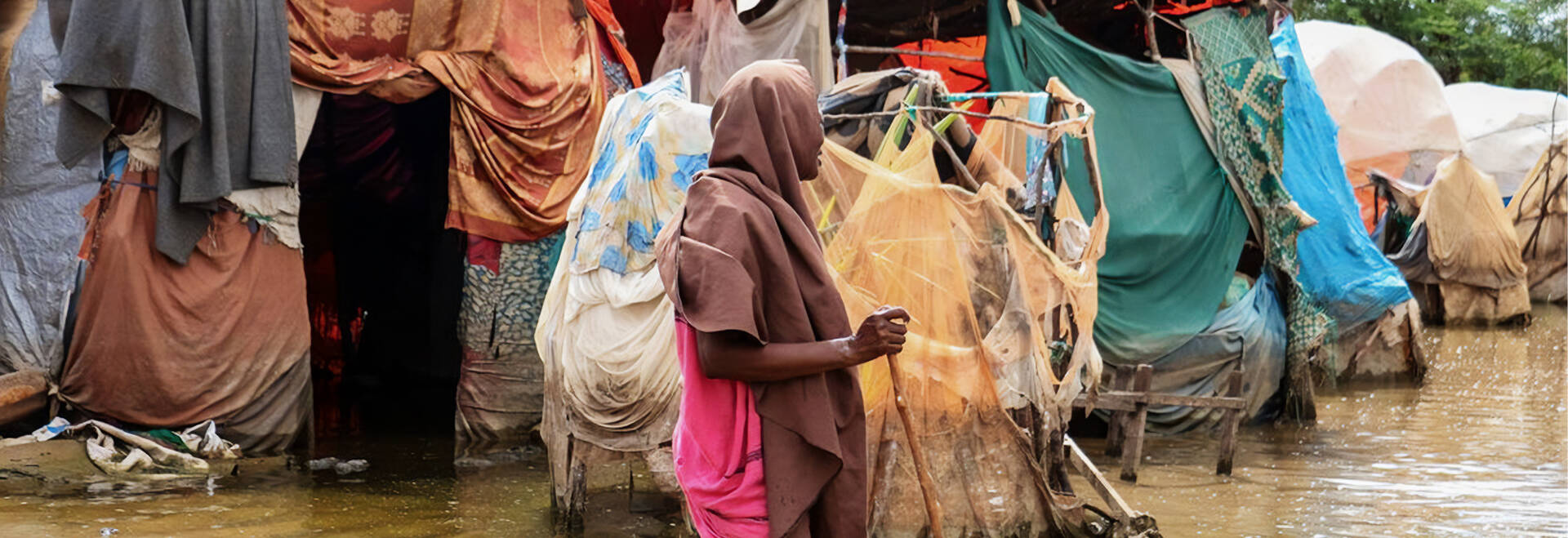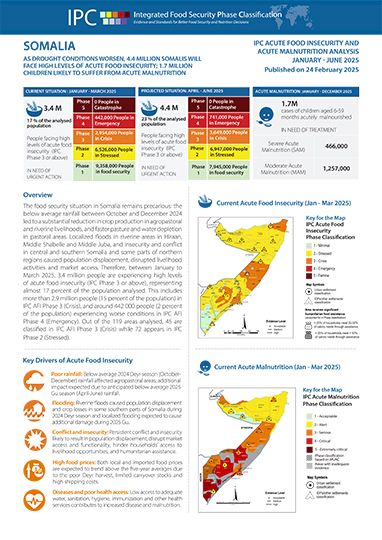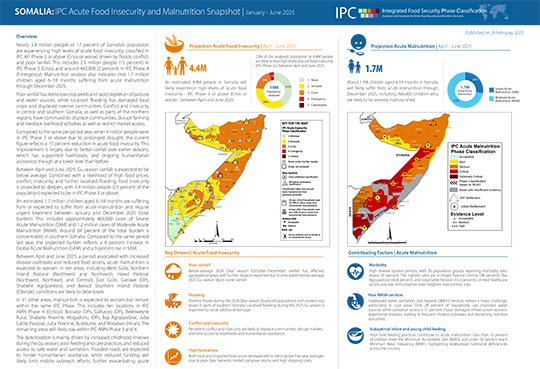
- © WFP
SOMALIA: 4.4 Million projected to face high acute food insecurity between April and June, 1.7 million children suffering acute malnutrition
Nearly 3.4 million people or 17 percent of Somalia’s population are experiencing high levels of acute food insecurity, classified in IPC AFI Phase 3 or above (Crisis or worse) driven by floods, conflict, and poor rainfall. This includes 2.9 million people (15 percent) in IPC Phase 3 (Crisis) and around 442,000 (2 percent) in IPC Phase 4 (Emergency). Malnutrition analysis also indicates that 1.7 million children aged 6–59 months suffering from acute malnutrition through December 2025.
Poor rainfall has led to low crop yields and rapid depletion of pasture and water sources, while localised flooding has damaged food crops and displaced riverine communities. Conflict and insecurity in central and southern Somalia, as well as parts of the northern regions, have continued to displace communities, disrupt farming and livestock livelihood activities as well as restrict market access. Compared to the same period last year, when 4 million people were in IPC Phase 3 or above due to prolonged drought, the current figure reflects a 15 percent reduction in acute food insecurity. This improvement is largely due to better rainfall over earlier seasons, which has supported livelihoods, and ongoing humanitarian assistance, though at a lower level than before.
Between April and June 2025, Gu season rainfall is expected to be below average. Combined with a likelihood of high food prices, conflict, insecurity, and further localised flooding, food insecurity is projected to deepen, with 4.4 million people (23 percent of the population) expected to be in IPC Phase 3 or above.
Join our mailing list


